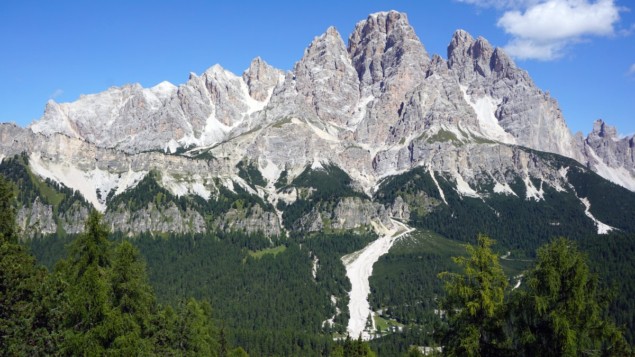
Dolomite is one of the most abundant carbonate minerals on Earth, but for 200 years geologists have puzzled over how it is formed in such huge quantities. Now, Joonsoo Kim and Wenhao Sun at the University of Michigan and colleagues in the US and Japan have discovered that dolomite formation involves repeating cycles of supersaturation and undersaturation – a finding that could bring this geological mystery to a close.
Most crystals will readily grow in a supersaturated solution, which has an ionic concentration in excess of a saturated solution at equilibrium. One glaring exception to this rule is dolomite (CaMg(CO3)2) – which makes up some 30% of all sedimentary carbonate minerals in the Earth’s crust. For over two centuries, researchers have attempted to grow dolomite crystals in supersaturated conditions in the lab. Yet despite these sustained efforts – with one experiment even maintaining a 1000-fold supersaturation for an astonishing 32 years – dolomite crystals have refused to grow artificially. This long-standing mystery is called the “dolomite problem”.
In their study, Kim, Sun and colleagues team approached the problem from a computational angle. Instead of trying to grow dolomite crystals in the lab, they modelled the crystals using a combination of density functional theory and kinetic Monte Carlo simulations. This allowed them to model dolomite crystal growth using the principles of quantum mechanics.
Disordered structure
As a result of their simulations, the researchers spotted a key step in the dolomite growth process that had eluded scientists for decades. In supersaturated conditions, they discovered that calcium and magnesium cations are initially deposited in a disordered atomic structure, inhibiting any further crystal growth.
Further simulations revealed that if the solution then becomes mildly undersaturated, these disordered regions are dissolved, and re-deposited in more orderly structures once the solution becomes supersaturated again.
This process appeared to be the missing link in our understanding of dolomite formation. It suggests that dolomite crystals do not simply grow in sustained conditions of supersaturation, but through repeated cycles of supersaturation and undersaturation – with frequent oscillations accelerating crystal growth by some seven orders of magnitude according to the team’s simulations.

‘Crystal critters’ self-eject from salty solution
Kim and colleagues then verified their calculations by doing laboratory experiments. Using an electron microscope, they observed cations forming a disordered layer on a dolomite crystal surface in a supersaturated solution. They then repeatedly used a pulsed electron beam to dissociate water molecules in the sample. Each pulse lowered the pH of the solution, creating a temporary undersaturated state. As ions re-deposited in supersaturated conditions, a crystalline layer started to grow. This was the first time that dolomite has ever been grown in the lab, after two centuries of failed attempts.
What is more, the research could help explain why recently formed dolomite is often found in environments where conditions such as pH and salinity are fluctuating – thereby creating natural cycles of supersaturation and undersaturation.
The work also raises new questions as to how these fluctuations could have appeared and disappeared on geological timescales in regions where dolomite is no longer growing today – hinting at past changes in factors including climate, shifting sea levels, and biological activity.
The study is described in Science.



